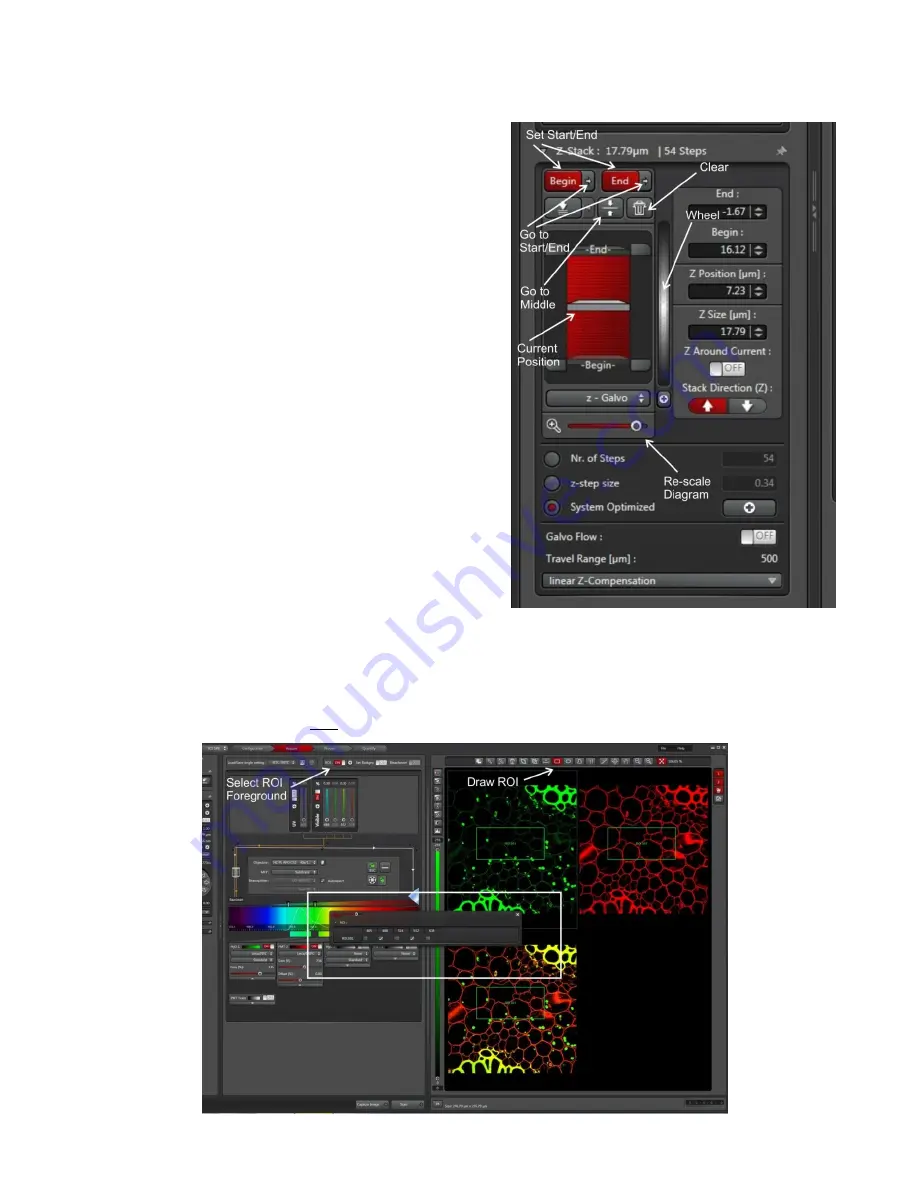
18
Programming a Stack
Programming a stack works similarly to the Mark
First/Last mechanism used in Zeiss LSM. It requires the
following steps:
1.
With Live acquisition going, adjust the focus to
the top of the stack. Use the Confocal Controller,
or the microscope controller fine focusing knob.
Fine adjustments may be made using the
clickable wheel.
2.
Click on
Set Start
.
3.
Re-adjust the focus to the bottom of the stack.
4.
Click on
Set End
.
The number of steps and the step size will be
automatically computed based on the longest
wavelength emission band. It can be modified by clicking
on
Nr. of Steps
or
z-step size
.
The diagram indicates the size and spacing of the
stack and the current stage position. It may be re-scaled
for better viewing using the slider provided.
Clicking on
the double-vertical arrow
button at the
top moves the stage to the middle of the stack.
Clicking on the
garbage can
icon will delete the
stack. This should be performed before creating a new
stack.
Use of the z-Galvo stage or the nosepiece for vertical
movement is controlled by the pull-down menu. The z-
Galvo stage is more precise.
Leave
Galvo Flow
off.
Acquiring from a Region of Interest
Unlike in Zeiss LSM, images can be acquired from a region of interest (ROI) alone, or from an ROI with
different conditions for an ROI and the background.






























